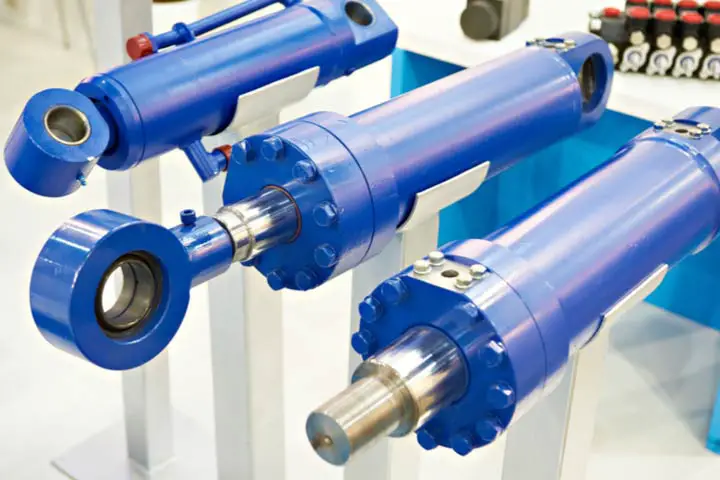Hydraulic cylinders are one of the most important components of the hydraulic industry. In order to convert the incompressible hydraulic fluid energy to work, hydraulic cylinders are used.
A hydraulic cylinder is a linear actuator that helps in generating an automatic force in a straight line either by pulling or pushing. The manufacturing of hydraulic cylinder requires many components. They include:
Request Exclusive Sample Report here @ https://www.researchdive.com/download-sample/3796
- A tube with finished interior and hard chrome-plated piston rods used to prevent pitting and scoring
- A piston and ram
- Two end caps
- Suitable oil seals
Seals are connected to the end caps for dispersing contaminates and preventing the risk of leakages.
Hydraulic cylinders are used in various mobile applications such as dump trucks, excavators, graders, loaders, dozers, and backhoes. Apart from this, hydraulic cylinder also has other applications including gym equipment, heavy machinery, wheelchair lifts, and many others. These beneficial features of the hydraulic cylinders have increased its demand in the end-use industries. A recent report by Research Dive, the global hydraulic cylinders market is anticipated to generate a significant revenue in the forthcoming years.
Connect with our expert analyst to get more details@ https://www.researchdive.com/connect-to-analyst/3796
Hydraulic cylinders come in a wide type range. The design of cylinders differs depending upon its applications and end-use industries. Types of these hydraulic cylinders vary in certain components including the material, operating pressure, procedures used for connecting end caps, temperature, and wall thickness of tube or end caps. Some of the most important cylinder types include single acting cylinders, double acting cylinders, welded rod, tie-rod, and telescopic cylinders. Let’s have brief insights about each of them:
- Single Acting Cylinders
This type of cylinder is referred to as single acting cylinder because the head end port of these cylinders works in a single direction. As soon as the liquid gets pumped into the cylinder barrel, it will extend the piston rod. An external force or a load string is needed for the generation of the return operation. Then external energy is used to drain the fluid from barrel to the reservoir. An example of the single acting cylinder is a hydraulic jack.
Single acting cylinders are divided into two types- spring-extend and spring-return. Spring-return is the most commonly used type of single acting cylinder.
- Double Acting Cylinders
Double acting cylinders are designed with ports in both the head and rod ends which make it easier to pump fluid. The ports will control the flow of the liquid and encourage movement in both ways. When the hydraulic fluid is pumped to the rod end, the piston rod is retracted. On the other hand, pumping the fluid to the head end will help in extending the piston rod. Applications of this type include the raising and lowering devices. Two main categories of double acting cylinders are differential type and synchronous types.
- Tie-Rod Cylinders
Tie-rod cylinders are most commonly used in the manufacturing and industrial applications. Ease of maintenance, assembling, and repairing are some of the benefits of this type of cylinders. Threaded steel rods are used in order to hold the end caps of the tie rod cylinders. Tie-rod end caps are useful for preventing leakages of the fluid.
- Welded Rod Cylinders
In the welded rod cylinders, end caps are directly connected to the barrel, which make the assembling and disassembling processes difficult for these cylinders. These cylinders are suitable for mobile applications because of the features of this type of cylinders such as compact construction, internal bearing lengths, and duty cycle.
- Telescopic Cylinders
Telescopic cylinders can be single or double acting. This type of cylinder homes more than five tubings. This is a single or double acting cylinder. Telescopic cylinder comprises more than five tubings. Each of these tubings nests inside one another. The diameter of each of these nested tubings or stages becomes lesser.
The Bottom Line
The hydraulic cylinders are rising in demand because of their applicability in various industries. With technological advancements, the hydraulic cylinders are expected to be more efficient in upcoming years.
Request for this Report Customization & Get a 10% Discount on this Report@ https://www.researchdive.com/request-for-customization/3796
Related Reports:
Commercial Air Conditioning System (VRF) Market
About Us:
Research Dive is a market research firm based in Pune, India. Maintaining the integrity and authenticity of the services, the firm provides services that are solely based on its exclusive data model, compelled by the 360-degree research methodology, which guarantees comprehensive and accurate analysis. With unprecedented access to several paid data resources, a team of expert researchers, and a strict work ethic, the firm offers insights that are extremely precise and reliable. Scrutinizing relevant news releases, government publications, and decades of trade data, and technical white papers, Research dive delivers the required services to its clients well within the required timeframe. Its expertise is focused on examining niche markets, targeting their major driving factors, and spotting threatening hindrances. Complementarily, it also has a seamless collaboration with the major Market aficionado that further offers its research an edge.
Contact Us:
Mr. Abhishek Paliwal
Research Dive
30 Wall St. 8th Floor, New York
NY 10005 (P)
+ 91 (788) 802-9103 (India)
+1 (917) 444-1262 (US) Toll
Free: +1 -888-961-4454
Email: support@researchdive.com
LinkedIn: https://www.linkedin.com/company/research-dive
Twitter: https://twitter.com/ResearchDive
Facebook: https://www.facebook.com/Research-Dive
0






